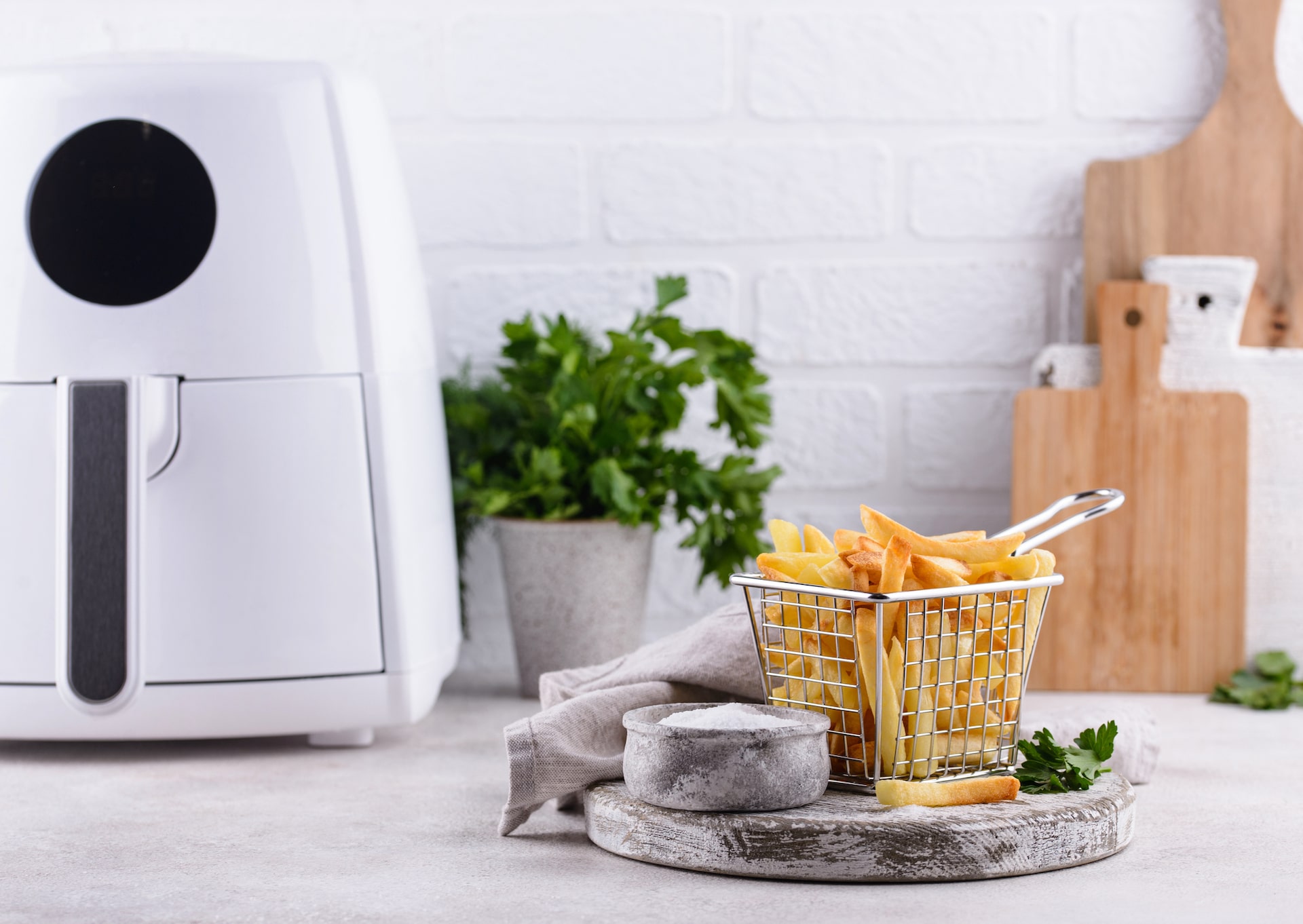This article may contain affiliate links. We may receive a commission for purchases made through these links. Privacy Policy.
When it comes to making your kitchen more kid-friendly, there are two primary things that you want to keep in mind. First, is your kitchen safe for your children to be in, whatever their age? Second, does your kitchen encourage family togetherness and inspire your children to be comfortable around food and cooking?
Your kitchen is likely one of the most-used rooms in your entire home, and you want it to be a place where everyone in the family feels welcomed and safe. The latter can be challenging, though, when you consider how many dangers the kitchen poses to young children, from hot stovetops to sharp knives.
Whether you’re homeowners designing a kitchen remodel or outfitting a DIY makeover for your current kitchen, here are 16 useful tips to craft your kitchen design into a more kid-friendly-kitchen. From creating kid-friendly activity spaces to protecting your children from household hazards, we’ve got you covered.

Making Your Kitchen Welcoming
Encourage your young kids to get in the kitchen alongside you, whether they’re merely observing and telling you about their day or actively helping set the dining room table. You can also hang your kids’ artwork proudly on the fridge to make them feel more welcomed.
Give the Kids their Own Space
It can be challenging to encourage family time in the kitchen if there aren’t any spaces in the room where your children can feel comfortable. Filled with high countertops and often few seating options, kitchens aren’t exactly made for those of a younger age and shorter stature.
Give your child their own space in the kitchen, whether that’s a child-sized table in an out-of-the-way corner, where they can draw, color, and talk with the family, or an easily accessible seat at the kitchen island. You can also stock some of your cabinetry with kid-friendly toys and kitchen/cooking tools, so they feel like they belong in the space, too.
Keep Clutter to a Minimum
This is a tip that will benefit the entire family, not just your kids. Try to keep clutter to a minimum in your kitchen, and we’re not just talking about dirty dishes. All too often, the kitchen counter, island or table can become a playroom for anything you don’t want to put away, from junk mail to car keys immediately.
Make a habit of keeping the kitchen free from clutter, which will create not only a more welcoming space for your family but also ensures your child doesn’t get into things they shouldn’t see when they’re hanging out with you in the kitchen.
Consider a Kid-Friendly Counter
If you’re replacing your kitchen cabinets and countertops, consider creating a portion of counter space that’s lowered to a more child-friendly height. This will give your child their own space where they can help prep food, eat, or interact with the family, without requiring them to climb up onto a dining chair, step stool or barstool, where they may be more likely to fall.
Go Smart
When it comes to kitchenware and appliances, there are so many tech-friendly options these days, with features perfect for families with young children. From stainless steel refrigerators that easily tell your child what’s in the fridge without the need for them to open the door to smart faucets that turn on with a simple touch and regulate water at a safe temperature, keep your child’s accessibility and safety needs in mind.
Related: 13 of the Best Kitchen Trash Cans [For Any and All Kitchens]
Add Something Fun
There’s no reason you can’t have a fun feature in your kitchen to engage your children and keep them occupied. (But no, don’t bother adding a television to one corner of the room.) Instead, maybe consider adding a chalkboard wall to one area of your kitchen. While you can find it handy for writing notes or grocery lists, they’ll love using the lower portion of the chalkboard wall for drawing.
If you don’t want to give your children such a permanent art space, you can also whip out some butcher paper, tape it to the tabletop or floor and let your children draw away.
Make the Cleaning Process More Manageable
The easier it is to keep your kitchen clean, the more likely you’ll keep it clean (and therefore welcoming). If you’re in the process of remodeling your kitchen, choose surfaces that are easy to wipe free of crumbs, spills and stains, as well as surfaces that are durable and will stand up to years of use.
Quartz is a smart countertop pick for many families, as it’s stain-resistant and highly durable. Laminate can also work if your budget can’t accommodate quartz countertops.
Go Open
Crowded, small kitchens are less likely to bring the family together. Make your kitchen an open floor plan, allowing for togetherness even if part of the family is in the dining room or living room. Not moving into a new space anytime soon? Maybe put knocking down that pesky wall on your renovation wishlist.
Related: 13 Best Kitchen Corner Storage Ideas [For Any Small Kitchen]
Making Your Kitchen a Space of Fun and Exploration

Introducing your children to food and cooking is no easy task. Beyond simply dealing with picky eaters, if your child doesn’t establish a healthy relationship with food and cooking, they could end up either not eating healthfully throughout their life or even with an eating disorder.
However, if you make your kitchen a safe space filled with fun, creativity and exploration, you’re more likely to foster a healthy relationship between your child and food.
Allow for Independence
If your child is a bit older, you may take that cabinet that you allocated for their toys and kid-friendly kitchen tools and add a few healthy snacks to it. If you set up some boundaries around when they can eat from the snack stash and how much, this will allow them some autonomy for choosing their own snacks without relying on a parent or guardian. It will make them think about their diet while also possibly freeing you up from fetching snacks whenever you hear a whining, “I’m hungry!”
One way to easily manage how much your child is eating from their snack stash? As soon as you get home from the grocery store, pre-portion snacks in individual, reusable containers for easy grab-and-go snacking on their part and simple monitoring on your part.
Healthful snack ideas to keep in the pantry include granola bars (look for low-sugar options), trail mix (again, low-sugar) and dried fruits. Likewise, you can save a small snack stash for your child in the fridge, if you have room for it, with string cheese, fresh veggies and fruits or yogurt.
Equip your Child with their Own Tools
Not sure where to find kid-sized kitchen tools made for their little hands like the ones mentioned above? Check out the options from Melissa & Doug. This brand offers a range of kid-sized supplies, and not just for cooking and baking. You can also find other kid-sized tools that might come in handy when getting your kids in the kitchen, such as miniature brooms and dustpans.
Related: How Often Should You Replace Your Kitchen Appliances?
Communicate
Even if your child isn’t interested in food or cooking at the moment, communicating with them about what you’re doing in the kitchen as you work can still be valuable. Talk to them about why your family enjoys a particular recipe, specific cooking techniques and what they do or your own memories of food and cooking as a child. You never know what might catch their interest and get them excited about cooking and eating with the family.
Let them Help… Even if that Help is Imperfect.
Of course, one of the top ways to get your kids engaged in the kitchen is to allow them to engage, whether through cracking some eggs, mixing the batter, chopping some vegetables or any other task that you think they can handle. Just remember — chances are good that they won’t be that great at whatever they’re working on, at least not at first, and that’s fine.
So what if there’s eggshell in the eggs, lumps in the batter or the chopped carrots are all different sizes? What matters is that your child is getting hands-on experience in the kitchen alongside their loved one.
Making Your Kitchen Safe

While you want your kitchen to be a welcoming and enjoyable space for the entire family, safety probably matters most when you have small children in the house. You can do a few things to ensure your child is always safe in the kitchen, such as adding rounded edges to the kitchen or slipcovers to any slippery surfaces.
Look for Kid-Friendly Appliances
If you have the opportunity to purchase some new appliances in the near future, look for appliances such as a fridge or stove that come with child lock settings. These will ensure your child doesn’t open up the refrigerator and start climbing the shelves to reach the ice cream or that they don’t curiously open the stove during a baking session.
Lock Cabinets as Needed
While child-safety locks can sometimes prove a nuisance to older family members, they’re vital for families with toddlers, who can all too easily slip away and begin exploring where they shouldn’t. Invest in some child-safety locks for your drawers and cabinets where you store potentially dangerous items, from cleaning supplies to knives.
Try to Avoid Spills and Slips
If you’re outfitting or designing a new kitchen, one way you can make your space a little more kid-friendly is by paying particular attention to your flooring. A textured floor, like cork, can better help your family avoid slips and falls.
If you’re stuck with whatever flooring you currently have, though, look for chairs, decor and other furnishings that are designed in such a way that your toddler or older child cannot easily push them over or fall off them.
Look for Safer Cleaning Supplies
While cleaning supplies should always be kept out of reach of children, you can make things even safer by opting for kid-friendly and pet-friendly cleaning supplies that won’t be toxic if your toddler decides to lick the countertop right after you cleaned it.
Go with Softer Edges
Any parent knows that sharp edges and corners are something to watch for. Children are all too apt to slip and knock their noggins.
If you’re designing a new kitchen or remodeling a current one, and looking for both new countertops and furnishings, consider options with rounded, softer corners. While it won’t completely eliminate sudden slips and messy head bumps, it may reduce the impact.
Related: 35 of the Best Kitchen Gadgets for Your Home [Buyer’s Guide]
Questions to Ask When Planning a Kid-Friendly Kitchen
Whether designing a new kitchen or changing up your current space, there are a few questions you can ask yourself when making your kitchen more kid-friendly.
- How old are your children, and what are their needs?
- Do you anticipate living in the house for a long time, and can therefore make more permanent or costly changes?
- How do you envision your family spending time together in the kitchen, and what do you need to make that possible?
- Are there any safety hazards that have proven a threat to your child in the past, and how can you eliminate those?
- What do you personally find are your top nuisances in the kitchen, and what can you do about them?
- Do you frequently have guests (and do they have children of their own)? How can your kitchen better serve you when you host?
Considering these questions and your answers can clue you into some of the more immediate kitchen changes you might want to make.
Create a Kitchen the Entire Family Loves

Make your kitchen a space that the whole family loves to spend time together. Not only will your children enjoy having a welcoming, exciting new space in which to learn and play, but everyone in the family will appreciate an inviting area that makes family time easier.
You might also like: The 19 Best Gifts For Chefs [They Are Sure To Love]
16 Tips On Making Your Kitchen More Kid Friendly:
- Give the Kids their Own Space
- Keep Clutter to a Minimum
- Consider a Kid-Friendly Counter
- Go Smart
- Add Something Fun
- Make the Cleaning Process More Manageable
- Go Open
- Allow for Independence
- Equip your Child with their Own Tools
- Communicate
- Let them Help… Even if that Help is Imperfect.
- Look for Kid-Friendly Appliances
- Lock Cabinets as Needed
- Try to Avoid Spills and Slips
- Look for Safer Cleaning Supplies
- Go with Softer Edges
Holly Riddle
view postHolly Riddle
Holly Riddle is a travel, food and lifestyle writer, and a full-time freelance content creator after several years on editorial staffs for a multitude of publications ranging in topic and audience demographic. She currently acts as the editor at large for Global Traveler magazine and is a regular contributor at Trazee Travel, WhereverFamily, TravelMag, CruiseHive and more. Ghostwritten work for travel clients has appeared on Forbes, Bloomberg, Inc. and other top publications. She also manages blogs for tour providers, hotels and tourism boards.
view post







